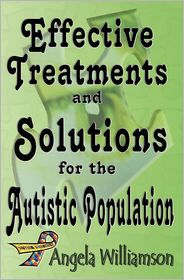Thank you for requesting the free report! Please Click on the link below to download your free report –> 10 Ways To Kick The Procrastination Habit Now free report
Category Archives:Manifesting goals
There are significant deficits seen within the Autistic Disorder, such social deficits, sensory deficits, perceptual deficits, and communication deficits (American Psychiatric Association, 2013). Individuals with autism will characterize inappropriate social interaction with others or inappropriate play. They also demonstrate atypical body movement, such as body rocking, hand flapping, covering their ears or eyes. Many individuals will autism have challenging behaviors, such as self injurious, aggression towards others, and outbursts (Hodgetts, Nicholas & Zwaigenbaum, 2013).
Aggression is common and occurs higher with individuals who have autism compared to other developmental disabilities (Hodgetts, Nicholas & Zwaigenbaum, 2013). It has been speculated that aggression among the population with autism occurs due to frustration from social difficulties, missed cues and the inability to communicate (Hodgetts, Nicholas & Zwaigenbaum, 2013). It has been reported that 68 percent of individual with autism will experience aggression at some point in their lives (Hodgetts, Nicholas & Zwaigenbaum, 2013). Parental stress comes from challenged behavior and aggression in children with autism (Hodgetts, Nicholas & Zwaigenbaum, 2013). Aggression affects the daily lives of individuals with autism and invokes stress on the family and caregivers (Hodgetts, Nicholas & Zwaigenbaum, 2013). Individuals with autism who exhibit extreme aggression towards themselves and others are likely to be hospitalized (Hodgetts, Nicholas & Zwaigenbaum, 2013). In addition, they are more than likely to be place in a residential setting. Ironically, it can also limit their access to residential living, respite, recreation activities, hinder their learning and their interpersonal skills with others, and treatment programs, (Hodgetts, Nicholas & Zwaigenbaum, 2013). There may experience social isolation, depression, and become stigmatized by others (Hodgetts, Nicholas & Zwaigenbaum, 2013).
Families are more than likely to be the sole caretakers of their child with autism and how they handle the aggression can significantly exacerbate the problem (Hodgetts, Nicholas & Zwaigenbaum, 2013). A study was conducted on aggression in individuals with autism and the impact it had on their families; it revealed that the families experience property destruction, physical harm, safely concerns for siblings, isolated from others, lack of respite care, and the lack of funding in providing services to these families(Hodgetts, Nicholas & Zwaigenbaum, 2013). Some families reported in the study that there were problems in receiving treatment or schooling for their family member with autism because of their aggressive behavior. Many were pleased with the multidisciplinary support which includes education, medical and behavioral management from an array of professionals (Hodgetts, Nicholas & Zwaigenbaum, 2013). However, they were somewhat disappointed in some professionals’ lack of knowledge in helping to resolve or decrease aggression in their children with autism and could not provide answers for them (Hodgetts, Nicholas & Zwaigenbaum, 2013). Moreover, these parents also reported in the study that the professionals were not sympathetic to their struggles and ignored their concerns about their children aggression. because there were appearing as typical to them (Hodgetts, Nicholas & Zwaigenbaum, 2013). Many parents reported that they had few lifetime resources to help them with their children with autism, such a crisis care, quality respite care, and safe alternative setting for living, etc (Hodgetts, Nicholas & Zwaigenbaum, 2013).
The medical community advocates the use of pharmaceutical approaches to managing aggressive behaviors in individuals with ASD, such as antipsychotic risperidone (Hodgetts, Nicholas & Zwaigenbaum, 2013). The medical community reported in literature that risperidone showed some positive results in decreasing aggression in the population with autism(Hodgetts, Nicholas & Zwaigenbaum, 2013).
Other medications used in among those with autism are a2-adrenergic agonists aslproate, olanzapine, atomoxetine seem very promising with professionals in the medical field in help those with autism. A report revealed that within one year, about 83 % of children with autism were prescribed by their doctors at least one drugs out of the 125 drugs (Hughes, 2008). The mostly prescribed drugs were anticonvulsants, anxiolytic/sedative/ hypnotics, hypotensives, stimulants antidepressants, benzodiazepines, and tranquilizers/ antipsychotics (Hughes, 2008). In a given year, about 70% of children with autism at the age of 8 received psychoactive medicine (Hughes, 2008). Parent should be very cautious when using medicine. They can cause possible brain damaged and other health problems. Medication should be the last resort. Many of the behavior can be addressed thought alternative means and behavioral therapy.
Parents and clinicians preferred to use behavioral intervention rather than antipsychotic medications (Hodgetts, Nicholas & Zwaigenbaum, 2013). There are concerns that antipsychotic medicine could have negative effects on the developing brain in child with autism with long-term usage ( Rimland, 1987& 1988 & 1997).
Parents of children with autism often will seek alternative medicine to help with their children aggression and challenging behaviors. Alternative professional speculate that autism is more of metabolic problem (Rimland, 1987 & 1988 & 1997). The leaky gut or gut hyperpermeability is often seen in the autism population cause by various sources, such as Candida, heavy metal toxicity, etc (Rimland, 1987 & 1988 & 1997). Many individuals with autism have been found to have sensitivity to chemicals, food allergies or intolerances, vitamin and mineral deficiency that contribute to their autistic symptoms or challenging behaviors (Rimland, 1987 & 1988 & 1997). Many individuals with autism are known to have intolerances to proteins called casein found in milk and gluten found in wheat or other in grains (Knivsberg, Wiig, et al 1990). They are also sensitive to other foods that cause the same problem. These proteins do not break down to the smallest unit and leak out of the gut to travel to the brain region inducing brain allergies or the immune system will identify them as foreign and will elicit an antigen response that cause an allergic reaction (McCann et al, 2007). Multitudes of individuals with autism have an impaired immune and digestive system that keep them from completely digesting certain foods that they are sensitive to or show intolerance (Adams, 2013). The symptoms can varies such as ‘drunk’ or ‘high’ behaviors, rashes on the body, rages, headaches, aggression, etc. (Rimland, 1988). Additives that are used in foods are known to cause hyperactivity in children (McCann et al, 2007). Artificial colors and flavors are also known to cause challenging behaviors, hyperactivity and aggression among the autism population who are sensitive (Adams, 2013). Therefore, avoiding the foods are very vital in treating behavioral problems, learning difficulties, allergies, etc.
Parents and professional test their children by eliminating certain foods from their diet through dietary log and elimination diets (Adams, 2013).Elimination diets involve taking out the most commonly known food that causes allergies for a few weeks and then reintroducing them (Adams, 2013). Elimination diet can be done with multiple or single foods items IgE or IgG testing help to determine allergies or sensitivities in the blood. The IgE is for immediate allergy reaction response and the IgG is for the delayed response of an allergy reaction (Adams, 2013). The skin testing is done to help determine immediate immune response (Adams, 2013). Testing the blood with the IgE and the IgG methods are not always accuracy or very limited in revealing allergies or sensitivities, despite clinical symptoms (Adams, 2013). Some professional may use the scratch test for immediately immune response; however, this test is also very limited.
Biomedical treatments include the implementation of the gluten / casein free diet and other dietary plans based the needs of the individual with autism. The implementation of probiotics, digestive enzymes, vitamin and mineral, melatonin, antifungal, essential fatty acids, improve diet, many more (Adams, 2013). A study done by Autism Institute Research(ARI) surveyed parents about their success or improvement with biomedical treatments. Over half reported that they had have success with this kind of treatment (Adams, 2013).
Three-quarters of children with autism exhibit IQs in mental retardation range (Tager-Flusberg Joseph, & Folstein, 2001). The individuals with higher function autism are considered to have IQ above 70 (Tager-Flusberg Joseph, & Folstein, 2001). The Verbal IQ (VIQ) is the Wechsler IQ profile use for individuals with autism and is lowered than the Performance IQ (PIQ) (Tager-Flusberg Joseph, & Folstein, 2001). This profile can be used for as a diagnostic for differentiating between and Asperger syndrome (Tager-Flusberg Joseph, & Folstein, 2001). There is a discrepancy in the reliability of the VIQ-PIQ with individuals with autism(Tager-Flusberg Joseph, & Folstein, 2001). The closer the individual with autism reaches the normal range; his or her autism diminishes (Tager-Flusberg Joseph, & Folstein, 2001). The Block Design subtest has a high peak among the population with autism (Tager-Flusberg Joseph, & Folstein, 2001). This subtest is from the Wechsler Performance Scale (Tager-Flusberg Joseph, & Folstein, 2001).
However, I dispute that autism individuals are mentally challenged. How do we know what individuals with autism know, if they are trapped in their world.
Young child with autism who participate in research are very useful in finding an underlying precedence for any kind of neuropsychological deficit Scale (Tager-Flusberg Joseph, & Folstein, 2001). A study discovered a deficient performance amongst the younger children who have autism (Tager-Flusberg Joseph, & Folstein, 2001). The working memory, inhibitory control, set-shifting capacities, and spatial reversal task (Tager-Flusberg Joseph, & Folstein, 2001). The impairments were associated joint attention, which is very common in autism in the beginning (Tager-Flusberg Joseph, & Folstein, 2001).
The execute function among individuals with autism is known to be impaired and problems with retrospective memory; however, little research is done on the prospective memory(PM) (William, Boucher, Lind & Jarrold, 2012). The PM refers to performing a task at a particular time in the future. For instance, remembering to keep a doctor appointment for next week or turning off the water when the bath tub is full would be an example PM (William, Boucher, Lind & Jarrold, 2012). Researchers make a distinction between time-based and event-based PM (William, Boucher, Lind & Jarrold, 2012). Event-based refers a particular event at a certain time, such as taken the pot out of the oven when the bell rings on the timer and rely on the cued to carry out the task (William, Boucher, Lind & Jarrold, 2012). Time-based event can be described as an event that is time based, such as removing the pot from the oven in 15 minutes and has to be self-initiated(William, Boucher, Lind & Jarrold, 2012).The difference between time-based and event-based PM, is that event-based uses less execute resources than time-based(William, Boucher, Lind & Jarrold, 2012). A study reveal that individuals with autism had difficulty in carry out the plan of , but were able to monitor the time as they check the clocks conyinually (William, Boucher, Lind & Jarrold, 2012). It also suggest that they retain the task instruction and understood the need for them monitor the time (William, Boucher, Lind & Jarrold, 2012). This study demonstrates that PM event-based and time-based was separate abilities (William, Boucher, Lind & Jarrold, 2012). The theory mind is often diminished in individuals with autism, which could be linked to the impairment in time-based with cognitive aptitude among this disorder (William, Boucher, Lind & Jarrold, 2012).
Studies suggest that individuals with autism have a weak central coherence (Tager-Flusberg Joseph, & Folstein, 2001). They recognize the hidden parts and are not susceptible to visual illusions (Tager-Flusberg Joseph, & Folstein, 2001). Individuals with autism would fail to utilize linguistic framework to interpret or disambiguate homographs during read aloud (Tager-Flusberg Joseph, & Folstein, 2001). Conversely, there several studies that demonstrate evidence of an intact global processing abilities in those with autism, which will contradict the weak coherence hypothesis (Tager-Flusberg Joseph, & Folstein, 2001). It could actually be the neuropsychological foundation remains to be elucidated that are likely to consist of numerous of interacting anomaly and deficits in attention (Tager-Flusberg Joseph, & Folstein, 2001).
Studies were done to see the prevalence and incidence of mental illness in adult with autism is comparable to the whole intellectual disabilities adult population (Melville, Cooper & et al, 2008) Conversely, when comparison was with gender, age, ability and Down syndrome, there were no differences. (Melville & Cooper, 2008). The high prevalence was due to behavioral problems, which was not attributed the presence of autism in the individuals. (Melville, Cooper & et al, 2008). There was a trend that illustrates the low incidence of behavioral problem in adults with autism compared to the control group in the study, but is not supported by statistics. (Melville & Cooper et al, 2008). During a two year period, the recovery rate of challenging behaviors was notably lower for adult with autism (Melville, Cooper & et al, 2008)
Screening tool used in the study for psychiatric disorders was the PAS-ADD Checklist for adults with intellectual disabilities (Melville, Cooper & et al, 2008). This checklist is comprise of 29 item to help determine psychopathology frequently experience with this population (Melville, Cooper & et al, 2008). There was a physical to help rule out any health problems that contribute any psychiatric issues (Melville, Cooper & et al, 2008).
During the first study, researchers use the matched control method to identify the confounding factors that relate to mental illness and challenging behaviors (Melville, Cooper & et al, 2008). The female population in this study had higher rates of depression (Melville, Cooper & et al, 2008). They did not have psychosis (Melville, Cooper & et al, 2008). However, the male population in this study was reported to have a higher rate of challenging behaviors (Melville, Cooper & et al, 2008). Behaviors that would make psychiatric referrals for this population would be self-injurious behavior, destruction of property, verbal aggression, physical aggression towards others, etc(Melville, Cooper & et al, 2008).
A current study reports difference in the prevalence of adults with autism and intellectual disabilities and adults with intellectual disabilities without autism in experiencing mental-illness(Melville, Cooper & et al, 2008). There are several authors that have pinpointed that the experience of depression has increased with adults who have autism and intellectual disabilities (Melville, Cooper & et al, 2008). There was a similar finding in a study by Tsakanikos (Tsakanikos et al.2006) However, the solid support of evidence in the study is lacking (Melville, Cooper & et al, 2008). The link of autism and schizophrenia has been explored; however, the link has not supported in this study (Melville, Cooper & et al, 2008).
Dr. Leo Kanner coined term infantile autism based his observations of behavioral disturbances seen in a small group of children (Levy et al, 2001). Nowadays, the concept of autism is more broadened due extensive research by the medical community. The autistic disorder was a rare disorder of yesteryears about 2 to 5 per 10,000 during the 1970s (Levy et al, 2001). It is now more common than Down syndrome disorder. There is one in 88 children on the autism spectrum disorder in the United States that was based on 14 communities from Center for Disease Control and Prevention (CDC) study in 2008. The rate of autism is now a public health concern in identifying risks (Centers for Disease Control and Prevention, 2012). Boys are five times more than likely to be diagnosed with autism than girls (Center for Disease Control and Prevention, 2012). It is uncertain in the medical community whether the increase was due to improvements in methodology of identifying and reporting the diagnoses of autism from pediatricians or from the clarity and broadening the diagnostic approach and procedural guidelines. The diagnostic criteria for diagnosing autism have notably changed in DSM V (American Psychiatric Association, 2013). For instances, the autism spectrum was identified under the Pervasive Developmental Disorders category, which included the Pervasive Developmental Disorder Not Otherwise Specified (PDD-NOS), Autistic Disorder, and the Asperger’s Disorder. These disorders now receive a separate diagnostic label with further distinctive characteristics based on their severity and are no longer under the Pervasive Developmental Disorder (American Psychiatric Association, 2013). The Retts disorder was removed from DSM V under the Autistic Disorder.
The populace became aware of autism when Kanner brought it popularity in the 1940s; however, there were evidence that autism exist long before (Gupta,2003). Attention was given to a group of children who exhibit ‘Disintegrative psychosis’ in year of 1867and children with behaviors similar to those with autism in 1908 by Beuler (Gupta,2003). In the 1919, a clinical psychologist named Lightner Whitmer, had seen a child who was 2 ½ with autistic behaviors. This disorder or Asperger is believed or suspected to be seen in famous people such as Henry Cavendish, a famous scientist (Gupta,2003). Thomas Jefferson was suspected to have Asperger due his aloofness and fixation when he was a child (Gupta,2003).There was a Scottish landlord who was referred to as mad, but he symptoms of autism and was documented in court from his dissolution of marriage as suggestive autism. Autism was once viewed as childhood schizophrenia (Gupta, 2003).
References:
American Psychiatric Association. (2013). Diagnostic and Statistical Manual of Mental Disorders (5th ed., text rev.). Washington,D.C.
Gupta., V.B(2003).The history, definition and classification of pervasive developmental disorders. EP Magazine .pp 58-62
As within so without! Your belief system and thought patterns inside your mind will show up in your surroundings. People often seek happiness outside of themselves, instead of finding it within. If you want to change your life, go inside your subconsciousness and change those deep rooted beliefs. .
Make SIX Figure with Les Brown click on herehttps://ici.infusionsoft.com/go/mi/a637/
Mediation is one proven method in listening to your inner guidance from the divine or to access the cosmic universe within. Affirmations are also good because it retrains the mind. However, the affirmations must be believable and worded in the present tense. For example, “I am happy” or “I am at peace.” When you use “I am,” you align with the divine or universe. It can also be worded in the past tense to get through the subconscious mind. For example, “I have always been happy” or “I have always been at peace.” The subconsciousness plays out in the physical world by attracting certain people, circumstances, events, etc to you. This gives the meaning as within so without validity.
Affirmation Software Click Here!
Visualization is also a great tool in manifesting the life you want, because it falls into the metaphysics of ” As within so without.” It can be done by using all of your senses by seeing it, feeling it, smelling it, tasting and living it. Go through the imagination of having it already and let it play out like a movie in your mind. Believe that it is happening for real and it manifest on the physical plane.
The Secret of Deliberate Creation Click Here!
Write down your thoughts or desires you want to see in the physical world. View them three times or more daily, focus on them continuously and align vibrationally with these thoughts or desires.
Manifesting A Joyful Life Click Here!
Have faith in what you want to accomplish. Don’t let hurdles get in your way. It could be the universe or the divine testing your faith. If you believe it within, it will manifest in the physical. As within so without. “Walk by faith and not by sight.”
Felicity’s Gluten Free Diet HandbookClick Here!
Photos by Andy Newson, Adamr, Sockimages,and thepathtraveler at http://www.freedigitalphotos.net/
Everything is energy that vibrates at a certain frequency. Frequency vibrates on a scale from high to low. This frequency will move up and down based on our emotions. When we are blissful and happy, our vibrational frequency is high. When we are angry, our frequency vibrates on the lower scale. You will attract people and events from the energy that is projected within you. Many people are unaware of their energy field and the consequences they attract to themselves.
The Secret of Deliberate Creation Click Here!
When you become conscious or awake, you will want to learn how to raise your vibrational frequency. One who possesses a vibrational match to his or her desires will bring them forth into fruition. In other words, you must be on the same frequency to what you want to manifest. For example, the most intense and frequent thoughts you have become your reality. Becoming aware of what’s inside your consciousness and subconsciousness, will allow you to get hold onto your life.
Here is the first thing you need do. Heal any emotional pain that in you by forgiving the person who has betrayed you. This is to help you release any bitterness or anger. Releasing these feelings will raise your vibrational frequency high.
Manifesting A Joyful Life Click Here!
Affirmations are great for uplifting your mind to a higher consciousness. However, they must be in present tense and ponder upon throughout the day for at least 15 minutes or more. For instance, I am at peace. I am happy. You must also visualize and feel peace or happiness within you. This raises your vibrational frequency immediately. Surround yourself with happy and loving people who will uplift your energy. Release the negative ones that depletes you. Affirmation SoftwareClick Here!
Make SIX Figure with Les Brown click on herehttps://ici.infusionsoft.com/go/mi/a637/
Photo by Salvatore Vuono- freedigitalphotos.net
Here are some tips in making your desires come true. Manifest your goals easily. First, believe in yourself if you want others to believe in you. You must also believe that you deserve to be successful. Secondly, you must change your consciousness in believing you can achieve your goals through affirmations and visualization for at least 15 minutes or more throughout the day. Write down your goals as if you had already achieved them. You must change your inner world to see changes in your environment. Take the time to work on your desires or passions. Whether it is an hour a day or a few minutes. Action is very important in how to make your desires come true or a reality.
Unfortunately, people have great ideas, but fail to put them into action or give up too quickly. Paitence is a virtue and must be practiced. Each time you fail, learn from your failure and try again. Many great businesspeople failed many times while getting started. For example, the founder of Macy’s department store failed in the beginning before this store became a huge success. He eventually manifested his dream department store. You too can manifest your goals.
Complete this activity.
Write down the following questions and think about them while you are coming up with your answers. What are your desires or passions in life and why? How do you want to pursue them and when? Does your desires or passions resonate within your soul? If you say yes, then you are on the right track.
Change your surroundings and get help!
Hang around like-minded people. The wrong people will talk you out of your dreams. They will tell you why it will not work or why it’s impossible to do it. Seek or attract people who are doing what you are pursuing. Get advice from the right people who had succeeded in the field you are aspiring and practice the attitude of gratitude. Seek help if you are stuck. A good mentor or a coach will help you get on track in manifesting your goals. You can also seek help from the divine. Just go within yourself to connect with God to help you find ways to accomplish your goals. Create a progress sheet for you goals. Write down daily 15 things you are grateful for in a journal. This is letting the universe know that you want more of the good things in life. Practice all of these steps and see how your desires come into fruition. These are a few tips on how to manifest your desires.








